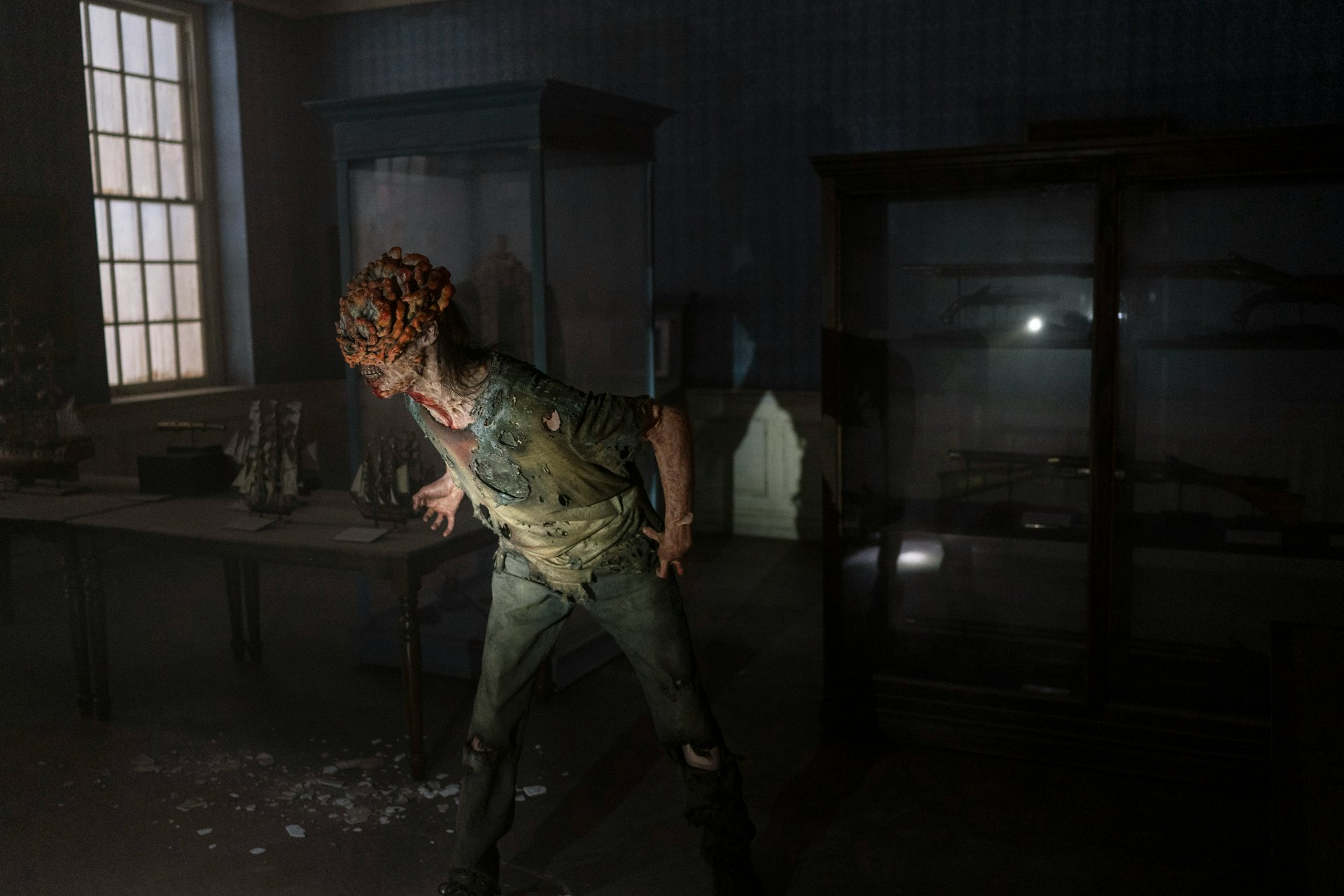
The epic quest for the best adaptation of a video game has reached an inflection point with The Last of Us. The latest episode, “Infection,” is a near-perfect replication of the video game experience, while still taking the necessary liberties to adapt to the nuances that television demands.
The Last of Us is far from its destination, but the acclaimed HBO version of the PlayStation blockbuster signals a maturation of game to live-action efforts. While future adaptations could easily fumble the bag, The Last of Us offers a glimmer of hope after decades of unglamorous translations.
Late in Episode 2, Joel (Pedro Pascal), Ellie (Bella Ramsey), and Tess (Anna Torv) make their way into “the museum.” Named the Freedom Museum of Boston in the game but absent of any identification in the show, the fictional museum is an attractive set-piece that contributes to The Last of Us’ primary narrative of civilization in decay. Populated by artifacts from the Revolutionary War, the museum is a reminder of how much it takes to establish governance, and how easily it can turn to dust.
For gamers, the set-piece is memorable for other reasons. The characters arrive at the museum halfway through the third chapter, a lengthy stretch where players meet the monstrous clickers for the first time. In both versions, clickers are victims who’ve been infected for years. They’re now blind predators who rely on echolocation to hunt, hence, their ominous (and gross) clicking sound.

The game gives players a handful of clicker encounters before the museum, a dynamic space that encourages players to use all the strategies they’ve learned. The museum is full of doors, corners, waist-high structures to hide and sneak behind, and glass bottles to throw as diversions. The museum also gives players the space to kill clickers however they choose, like with shivs and stealth takedowns.
The museum level isn’t remembered for its difficulty. But it is a stand-out part of the game’s experience, as it’s one of the first environments where players must fully engage with every visual and audio element to progress. The TV show doesn’t need to teach its audience the same way, but it still captures the intensity of the scene.
It helps that The Last of Us has always been “cinematic.” Released in 2013, late in the PlayStation 3’s life cycle, the original iteration had just enough technical horsepower to resemble a movie. It’s not that triple-A games didn’t have higher storytelling aspirations before The Last of Us, but in upholding the high standards set by Naughty Dog, the studio responsible for the Uncharted franchise, The Last of Us more or less gave the HBO series all the tools it needed to create a similarly memorable moment.
The museum scene feels like the game, while strengthening its credibility as a television show. The series translates the level to TV by implementing dramatic conditions the characters have to abide by; essentially, the rules of the game. If the characters break the rules, they’re forced to fight. In this instance, the rule is to stay whisper silent. Episode director Neil Druckmann, who also wrote and co-directed the games, uses this condition to excite and thrill, like when Joel has an unnervingly close encounter with a clicker who just misses him. It stays true to the game while offering an experience only the TV show could offer.
Previous game adaptations have struggled to translate the dynamics of their source material in entertaining ways. Street Fighter or the Mortal Kombat films knew to let their characters fight, but couldn’t grasp what those fights were supposed to feel like. Doom tried to experiment with first-person action but couldn’t capture the thrill of the game’s combat. More recent movies, like 2018’s Tomb Raider and last year’s Uncharted, simply mined the iconography of their source material to fuel generic action movies.
The Last of Us may “feel” like a video game, but that’s because it successfully executes what other video game adaptations either fail to pull off or don’t even attempt. Future projects will hopefully learn from the show in the same way the game taught its players.
The Last of Us is streaming on HBO Max.







